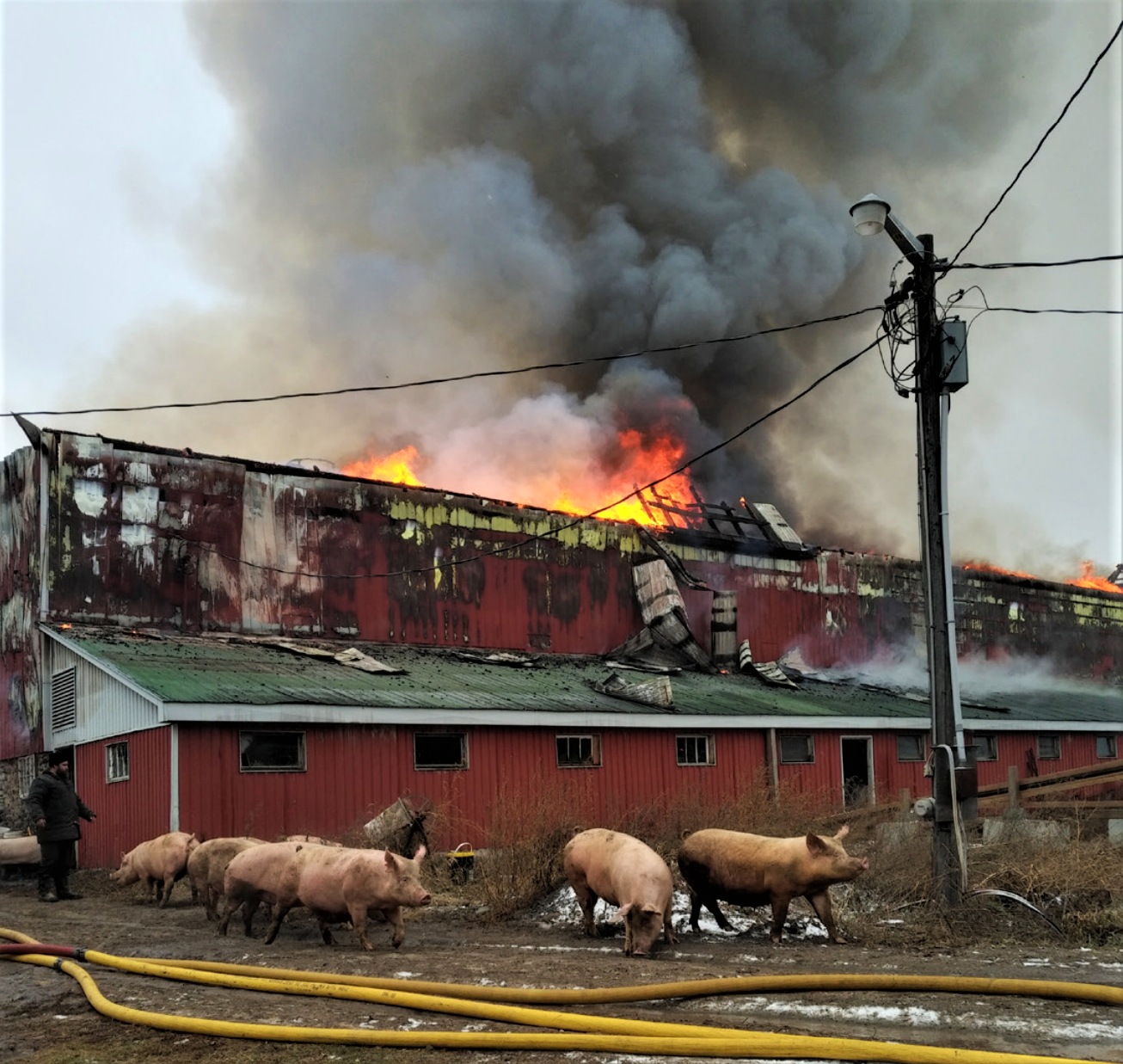By Jessica Scott-Reid
Jessica is a Canadian writer, animal advocate and plant-based food expert. Her work appears regularly in media across Canada and the US.
In 2017, I wrote an op-ed for a national newspaper in Canada on the topic of barn fires. It was very early in my career, before I knew much about the plight of farmed animals, about the public’s general lack of awareness about farmed animal issues, and the government’s lack of concern. Barn fires seemed like such a glaring topic to take on. Surely this is a major problem, I thought. Surely the public will care about trapped animals burning to death. Surely they will be enraged to learn that there are no legal requirements for fire protection and detection in buildings housing these living beings. Surely this article will spark change.
Nearly five years later, barn fires continue to rage across North America killing millions of animals. At the core of the issue is that in Canada and the US, as in much of the world, farmed animals are legally deemed property — like a tractor, a tool, a bale of hay — and replaceable.
Between 2015-2019, Humane Society International/Canada reports that at least 740,000 animals died as a result of barn fires in Canada. However as not all fires are reported in the media, the group explains in a recent report, and “not all media reports include a figure for the number of animals who died, especially for smaller fires, this figure is undoubtedly a conservative estimate of the actual number of farm animal deaths that have occurred.”
In the US, between 2017-2019, at least two million animals died in barn fires, according to the Animal Welfare Institute, which also notes in its report that this number does not represent the full scale of the harm done. “That is because the number of fires and animal deaths in recent years likely exceeds totals reported by the media, since municipalities are not generally required to report barn fires, and some companies decline to release the information to the public.”
Photo: Juho Kerala/HIDDEN/We Animals Media
In both countries, the majority of animals killed are chickens. This is due to the fact that such a massive number (tens of thousands) of these animals are often kept in one building at a time. Barn fires also often cause so many animals to perish because there is nothing legally required to prevent the fire from overtaking the building, such as sprinklers or fire doors. Unlike a home or business frequented by humans, buildings housing farmed animals — which are becoming increasingly automated with fewer people on site — fall under a different code due to having “low human occupancy.”
This designation, which fails to recognize farmed animals as sentient beings with the ability to suffer, means there is no legal necessity for not only fire prevention measures but not even fire detection equipment such as an alarm. Thus these fires, which usually take place under the cover of night, are able to destroy an animal barn long before anyone is aware and before most, if any, animals can be saved.
What I have found in my subsequent years of covering the ongoing barn fires in North America, is that media coverage typically focuses on farmers, businesses, even the industry as a whole as the victims, and animal loss is often described as monetary loss. So, it’s little wonder that the general public is barely engaged and certainly rarely enraged. Positioned in this way, barn fires, trapped animals burning to death, are viewed as just an unfortunate, unavoidable part of the animal agriculture industry.
Barn fire in Ontario, Canada. Photo: John Whelan and Humane Society International
But barn fires are avoidable. Certain governments and organizations do offer assistance for farmers in the prevention of barn fires. The Ontario government, for example, on its Ministry of Agriculture and Rural Affairs website, states that nearly half of all barn fires are caused by faulty electrical systems, and suggests that regular electrical inspections, routine housekeeping and monitoring of heat levels can help. Unfortunately, these are suggestions, not rules or laws.
Animal welfare organization Humane Canada also offers “12 key barn fire prevention tips,” which include constructive ideas such as hosting an open house for emergency services personnel to familiarize themselves with the layout of the property, and conducting fire drills with all employees and animals. The group also says to “Install one 10-pound fire extinguisher at every exit and additional extinguishers at 50-foot intervals throughout the barn,” and to remove cobwebs weekly.
Barn fires and the unthinkable suffering they cause can be prevented. But, as long as the law deems farmed animals as mere property, and does not recognize the legal necessity for fire prevention and detection on farms, it will remain up to farmers to care enough about their animals to invest in protection measures. It is also up to consumers to vote with our grocery dollars for how we want to see animals treated, by buying plant-based foods rather than animal products.
I don't want to still be writing about barn fires in yet another five years.



